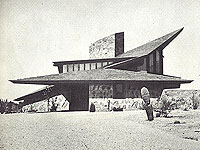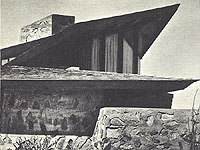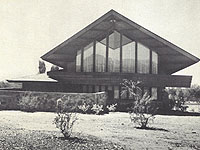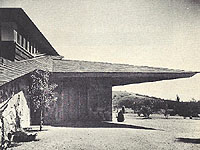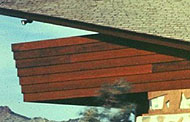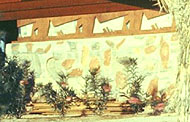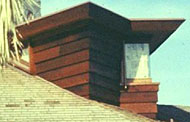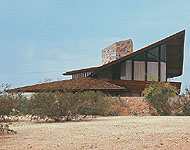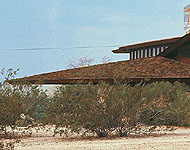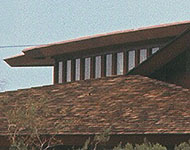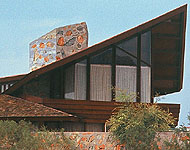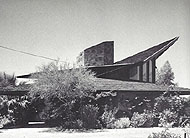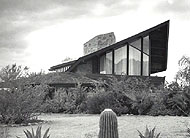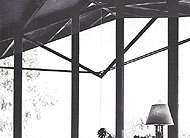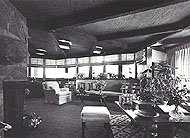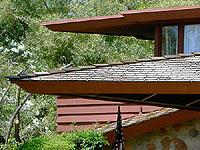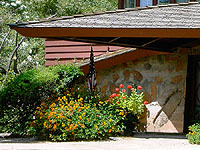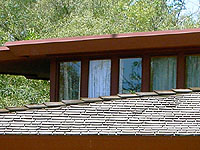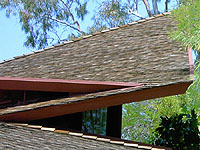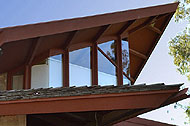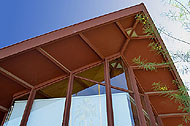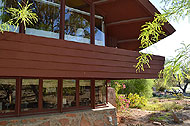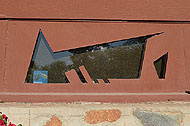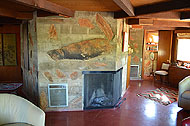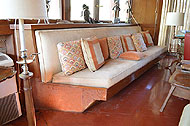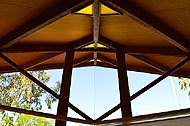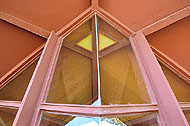|
|
|
|
|
WE
PROUDLY SUPPORT FALLINGWATER
AND THE WESTERN
PENNSYLVANIA CONSERVANCY
 |
|
|
|
|
Wright Studies
Jorgine Boomer Residence,
Phoenix, Arizona (1953 - S.361) |
|
|
|
|
|
Introduction
Frank Sinatra
Lucius Boomer Residence (1947-52)
George Clark Cottage (1951)
Boomer Presentation Drawing
Boomer (1954)
Boomer Floor Plan
Light Screen
Boomer (1955)
Boomer (1956-7)
Boomer (1963)
Boomer (1973-5)
Boomer (2004)
Boomer (2014)
Bibliography |
|
|
|
|
|
Introduction |
|
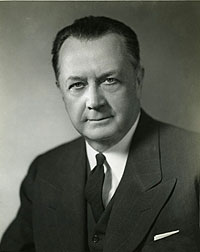 Lucius M Boomer was one of the most well known
and successful hoteliers of
the early twentieth century. Not only was he the Chairman of
the Waldorf-Astoria Hotel Corporation, he owned and managed
high end hotels in Washington D. C., Philadelphia, Boston,
as-well-as the original and current Waldorf-Astoria in New
York City. Lucius M Boomer was one of the most well known
and successful hoteliers of
the early twentieth century. Not only was he the Chairman of
the Waldorf-Astoria Hotel Corporation, he owned and managed
high end hotels in Washington D. C., Philadelphia, Boston,
as-well-as the original and current Waldorf-Astoria in New
York City.
He was born in New York on August 22, 1878. He managed
a number of hotels, and by 1918, at the age of 39, he
was president of the Boomer-duPont Properties Corporation,
owning and managing the McAlpin and the Claridge Hotels.
That year they assumed control and management of the
Waldorf-Astoria. The December, 1922 issue of Hotel
Monthly reported, "Mr. Boomer moved his headquarters to the
Waldorf-Astoria, which is now the head center of the Hotels
System, which include the Waldorf-Astoria and Woodstock
Hotels, the Apartments and Cafe Savarin in New York; the
Bellevue Stratford in Philadelphia and the Willard in
Washington... He continued as a Director for the McAlpin." In 1925 Boomer authored the groundbreaking
book "Hotel Management: Principles and Practice"
Harper & Brothers, New York and London.
Jorgine Slettede was born on August 18,
1887 in Norway. In 1903, at the age of 16, she and her older
sister immigrated to the United States, finally arriving at
their Uncles farm in Fergus Falls, Minnesota. She eventually
became a student nurse and then
|
|
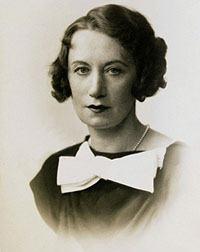 was
admitted to Columbia University of Physicians and Surgeons
in New York City. In 1915, she married Richard Sloane, one
of the faculty members at Columbia. Six months later she was
widowed. was
admitted to Columbia University of Physicians and Surgeons
in New York City. In 1915, she married Richard Sloane, one
of the faculty members at Columbia. Six months later she was
widowed.
In September, 1920 Lucius and Jorgine were
married, which became a partnership at the Waldorf-Astoria,
he as manager and she as hostess. The original hotel was
torn down to make way for the Empire State Building, but the
Boomers retained ownership of the name. In 1931 the new
Waldorf-Astoria opened on Park Avenue.
They became personal
friends with many of the residencies and guests of the hotel: Presidents
Hoover, Truman and Eisenhower, Benny Goodman, Charlie
Chaplin, along with many dignitaries. They were also
instrumental in giving Frank Sinatra one of his first gigs.
In 1945, Jorgine Boomer served as a
technical advisor for the film, "Week-End at the Waldorf", a
remake of the original "Grand Hotel," 1932, an adaptation of
the Vicki Baum novel "Menschen im Hotel."
Full circle. The Boomer property bordered
the Arizona Biltmore. She most likely purchased the property
because of its proximity to the Biltmore. In 2013, the
Arizona Biltmore was acquired by the Waldorf Astoria. |
|
|
|
|
|
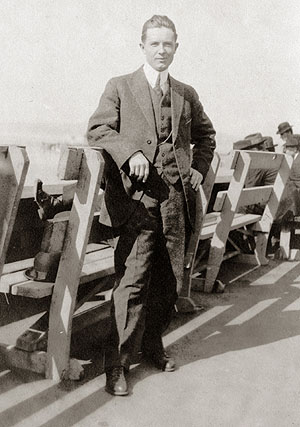 |
|
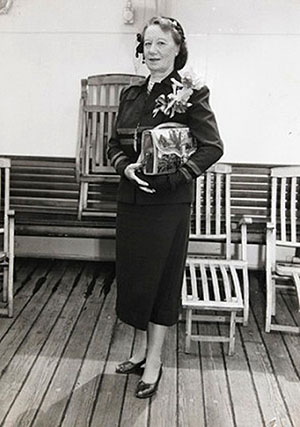 |
|
Lucius M. Boomer,
State Archives of Florida. |
|
Jorgine Boomer. |
|
|
|
|
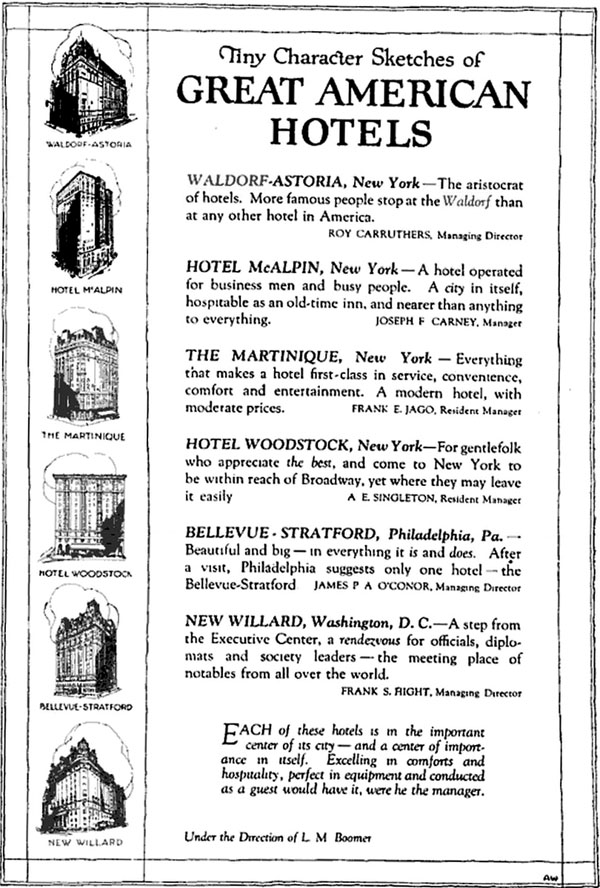 |
|
Ad for L. M. Boomer. Hotel
Management, December 1922. |
|
|
 |
"Week-End at the Waldorf",
1945. Jorgine Boomer served as a technical advisor on the
film.
Courtesy of Metro-Goldwyn-Mayer. |
|
|
|
|
|
|
|
|
Lucius Boomer House, Redesign of the Rose
Pauson Residence (Project 1947 - 52) |
|
During the early part of 1947, the Boomers contact Frank
Lloyd Wright to design a re-build of the Pauson House, his
first residential commission in Arizona, which
had burned in 1943. But during a trip to Norway in June of
1947, Lucius died suddenly on the 25th from a heart
ailment. This left Jorgine in charge of |
|
the Waldorf-Astoria. Over the next few years, Jorgine
continued to make changes to the Pauson re-design. Working drawings were prepared and signed as late as 1952.
But she had a change of heart, and decided against
rebuilding the home, and purchasing the property from Rose
Pauson. |
|
|
|
|
|
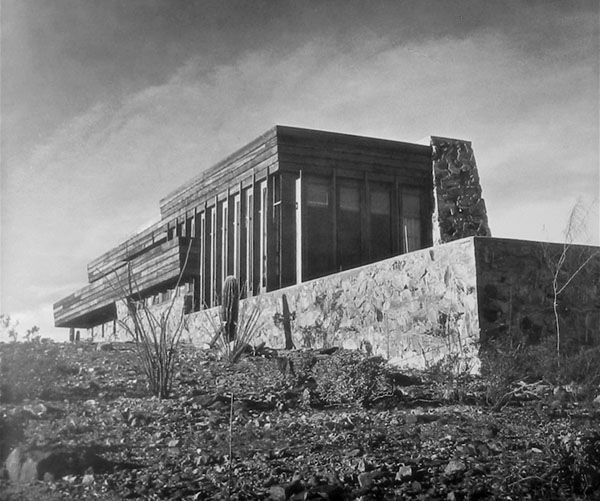 |
|
Rose Pauson
Residence, Phoenix, AZ, circa 1940, before being destroyed
by fire. |
|
|
|
|
|
|
|
|
George O. Clark Cottage "Sun Bonnet" for Carmel, California
(Project - 1951) |
In 1951, Frank Lloyd
Wright designed a cottage for George O. Clark, for a site on
the beach in Carmel, California.
"In late summer 1951, when Mr. Wright
brought his first sketch for the George Clark residence into
the drafting room. With me (Milton Striker) in the studio
that summer were chief draftsman Jack Howe, structural
engineer Mendel Glickman, and apprentice John Rattenbury.
(Written by Milton Striker.)
"Wright's thumbnail sketch of the Clark
residence was playing card size on an 8 x 11 sheet of paper
and the images are forever imprinted on my mind. The
building site is located on the Carmel, California coast and
John Rattenbury suggested that the image looked like a
whale breaching...
"As Jack Howe's preliminary design
progressed, the design object looked more and more like a
cottage, yet it still resembled a whale...
"The name 'Sun Bonnet' was applied to the
Clark Cottage |
|
after I left the Fellowship. The project was
not built and the design later appears as the Boomer
Residence in Phoenix (S.361, 1953). The design was modified
to the new client's needs and the house was shaded from the
desert sun by its 'bonnet.' Whether derived from a 'whale or
of a 'sun bonnet', each project takes a metaphorical
approach to organic... It is worth noting that the Clark
preliminary drawings were finished while the construction
work was being completed for the Unitarian Church (S.291,
1951) at Madison. Did the Unitarian Church design influence
the Clark Cottage design? There are similarities.
Architecture is evolutionary, with design influenced and
refined sequentially from project to project."
"Design Through Abstraction," Stricker, Milton,. 2007,
pages 49-51.
Although the home was never built by George
Clark due to lack of funds, two years later it was
resurrected by Wright and built as the Jorgine Boomer
Residence. |
|
|
|
|
|
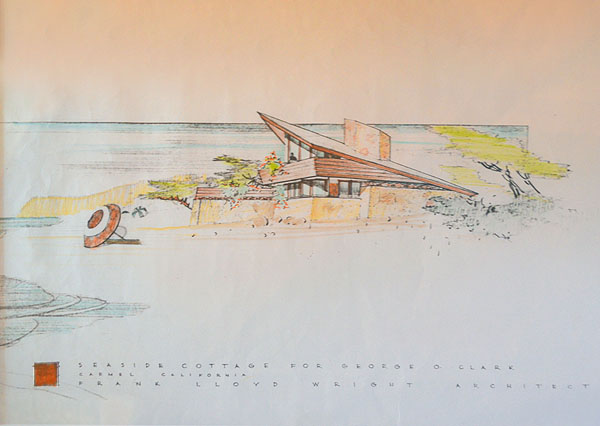 |
"Seaside
Cottage for George O. Clark, Carmel, California. Frank Lloyd
Wright, Architect.
Courtesy of the Frank Lloyd Wright Foundation." |
|
|
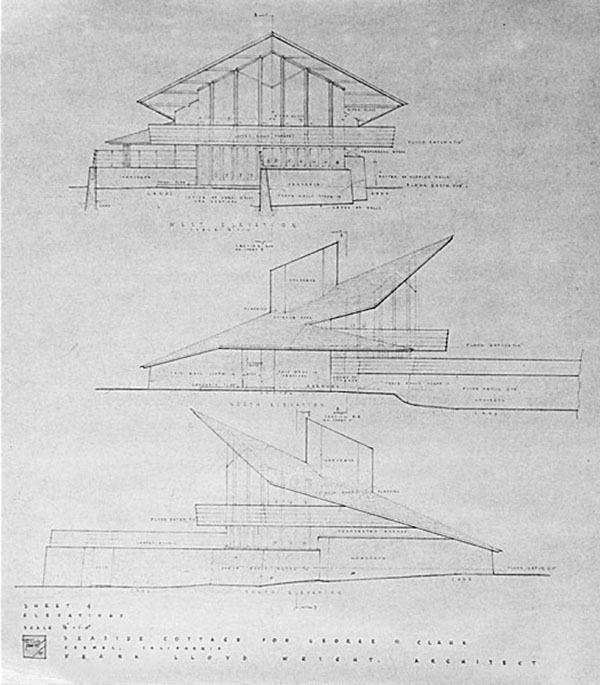 |
"Seaside
Cottage Elevations for George O. Clark, Carmel, California.
West, North and South Elevations.
Frank Lloyd
Wright, Architect." Courtesy of the Frank Lloyd Wright
Foundation. |
|
|
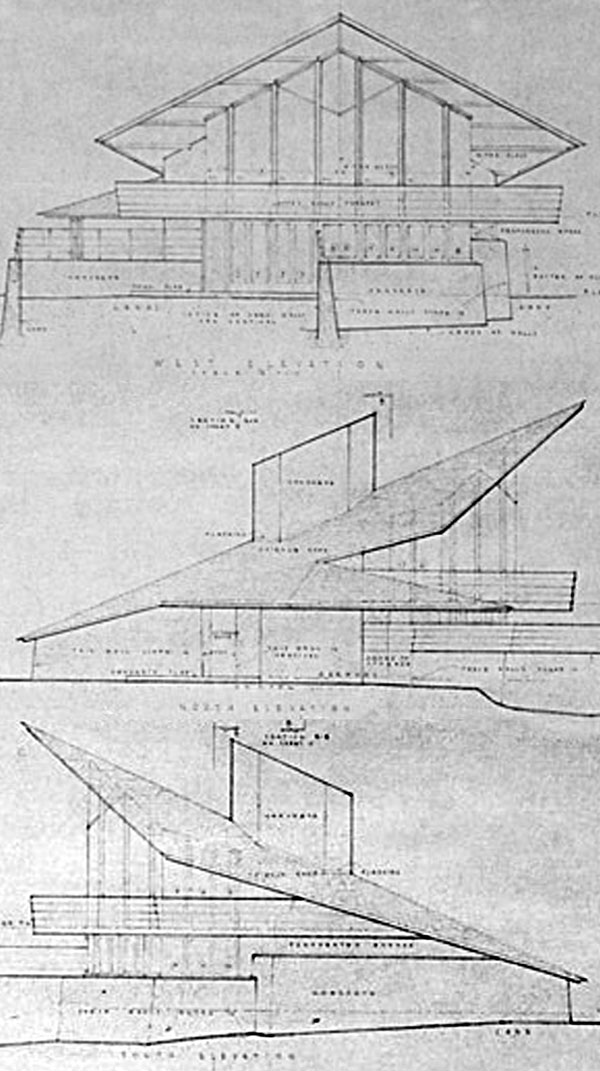 |
Detail: Seaside
Cottage Elevations for George O. Clark, Carmel, California.
West, North and South
Elevations. Frank Lloyd
Wright, Architect. Courtesy of the Frank Lloyd Wright
Foundation. |
|
|
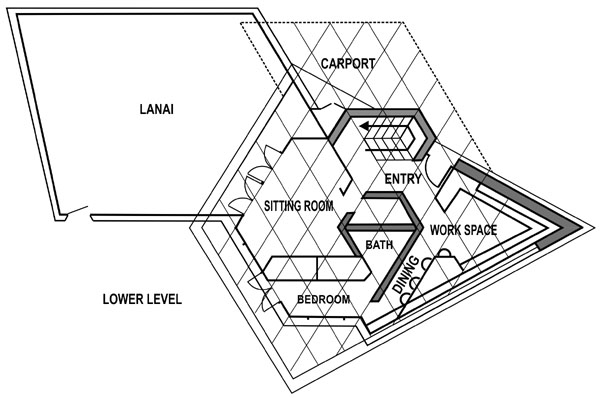 |
|
Floor plan for the George O.
Clark Seaside Cottage, Carmel, California. Adapted by
Douglas M. Steiner. |
|
|
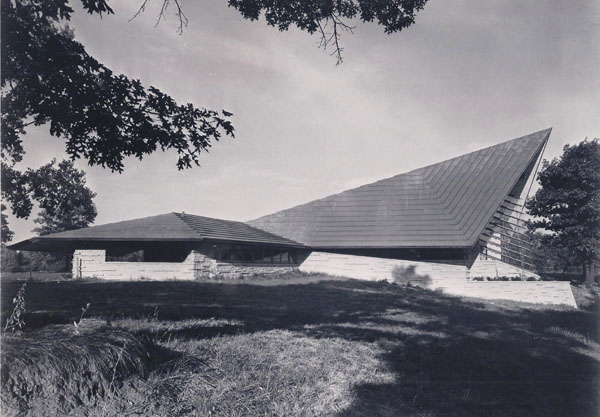 |
|
The preliminary drawings for the Clark cottage were
finished during the completion of the
Unitarian Meeting
House at Madison. |
|
|
|
|
|
|
|
|
|
|
|
|
|
|
Jorgine Boomer Presentation Drawing
(1953) |
 |
"Desert
Cottage for Jorgine Boomer. Frank Lloyd
Wright, Architect."
Courtesy of the Frank Lloyd Wright Foundation. |
|
|
|
|
|
|
|
Jorgine Boomer Residence - "The Natural
House"
(1954) |
About the time that Jorgine
Boomer opted for a smaller residence instead of rebuilding
the Pauson residence, George Clark decided against building
his cottage on the Carmel coast. Not to let a good design go
to waste, Wright erased Clark's name and replaced it with
"Desert Cottage for Jorgine Boomer."
He presented the plans to Boomer, and she
agreed. He rotated the home 180 degrees, facing
Northeast away from the sun's heat, with sweeping views of
the Piestewa (Squaw) Peak (yes, it was visible from the
property at the time the home was built).
Frank Lloyd Wright wrote, "The Usonian
house, then, aims to be a natural performance, one that is
integral to site; integral |
|
to environment; integral to
the life of the inhabitants. A house integral with the
nature of materials - wherein glass is used as glass, stone
as stone, wood as wood - and all the elements of environment
go into and throughout the house."
The Natural House,
Wright, 1954, p. 134.
As late as 1952, Boomer was moving toward
the reconstruction of the Pauson Residence. It wasn't until
1953 that the decision was made to modify and build the
Clark design. Taking into consideration time for modifying
the Clark plans, completing the Boomer working drawings, and
the construction of the home, it was finished in time...
Continue... |
|
|
|
|
|
|
Jorgine Boomer Residence - Floor Plan
(1954) |
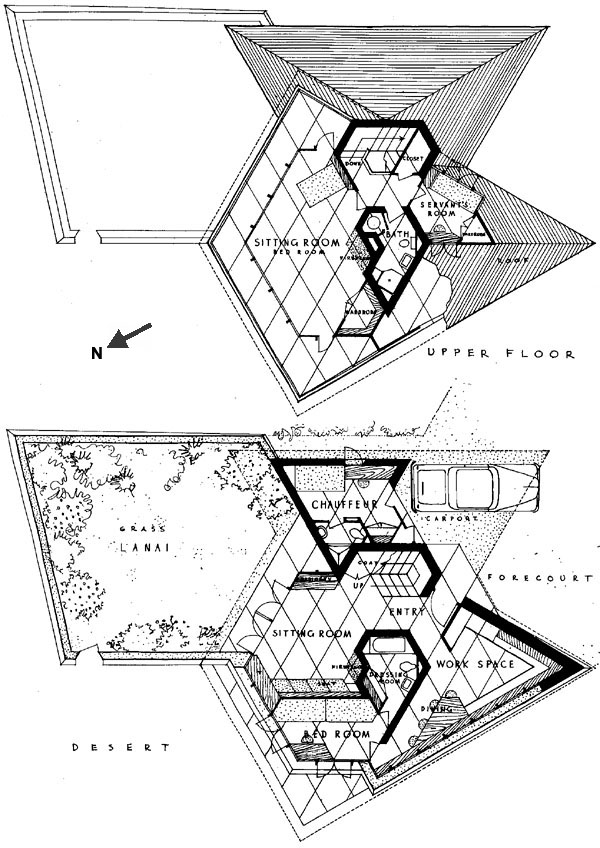 |
|
Floor plan for the Jorgine
Boomer Cottage, Phoenix, Arizona. Published in "The Natural
House," 1954. (Courtesy of Horizon Press, New
York and The Frank Lloyd Wright Foundation.) |
| |
| |
| |
|
Jorgine Boomer Residence - Light
Screen |
 |
|
Perforated light screens, which
run along the west side of the home, provide privacy and
allow natural light into the Dining Room and Kitchen of the
Jorgine Boomer Cottage,
Phoenix, Arizona. Adaptation by Douglas M. Steiner. |
| |
| |
| |
|
Jorgine Boomer Residence (1955) |
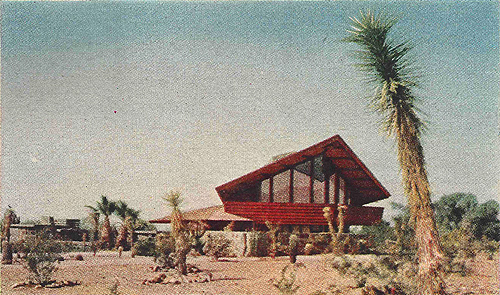 |
|
Published in
Time Magazine,
July 25, 1955. Caption: "Sunbonnet Roof, for comfortable
desert living, was designed by Architect
Frank Lloyd Wright to
protect this Phoenix house from glare and heat." The
Benjamin Adelman Residence can be seen in the background.
|
| |
| |
| |
|
|
Jorgine Boomer Residence
(Circa 1956) |
|
Jorgine Boomer
Residence
Circa 1956. Set of four
photographs.
Image 1: A rare color photograph showing the natural
colors of wood and stone used in the
Boomer residence. The row of plantings on the left were
approximately 1-2 feet in the 1954 image number 4, published
in "The Natural House". They are now approximately 3 feet
tall, and in full bloom. The larger tree on the left, has also gained 2-3
feet which appears on the far right in the 1954 image. This
image also shows the original second floor, before the
expansion of the south end. The walls are |
|
constructed of natural red
desert stone set in concrete. First floor: The walled Lanai
is on the far left, the Dining Room and
Work Space in the center. Perforated light screens add a
measure of privacy to the Dining Room
and Work Space. The Entrance and Chauffeur's quarter are on
the right below the wide cantilevered overhanging eve. Upper floor: The Balcony and Roof cantilever
out over the Lanai. The Sitting Room (Bedroom) is on the
left, the Servant's Room is on the right. The concrete center
mass houses the bathrooms and fireplaces on...
Continue... |
| |
|
|
Jorgine Boomer Residence
(Circa 1963) |
|
Jorgine Boomer Residence 1963,
viewed from the Northeast. Nine years after the home was
completed, the existing foliage has grown, but still remains
sparse like the original 1954 images. Living room curtains have
been replaced. Arizona Biltmore can be seen in the
background on the right. The south end of the upper level
has been greatly expanded. The walls are constructed
of natural red desert stone set in concrete. First floor:
The Chauffer's |
|
quarters and Entrance are on the left, the Sitting Room to
the right, and the walled Lanai on the far right. Upper
floor: The Servant's Room is on the left, stairway is in the
center, the Sitting Room
(Bedroom) is on the right. The concrete masonry core houses
the bathrooms and fireplaces on the first and second floors,
and mimics the same angle of the large dramatic roof that
reaches skyward...
Continue... |
| |
|
|
Jorgine Boomer Residence
(Circa 1973-5) |
|
Jorgine Boomer Residence Circa
1973-5. This set of six photographs were photographed by
Yukio Futagawa. Five of the six were published in the 1976, "Global
Interiors #10", p.148-51. 26 homes were photographed for
this volume. That would date these photographs prior to
1976. The automobile parked in the driveway on the left (in
image #1) is a
1959 Buick Electra. Looking at the landscaping, the foliage
could easily be 20 years old, when comparing it to the
landscaping from 1953 and 1963. Image #2 was published in "Frank
Lloyd Wright Monograph |
|
1951-1959" Volume 8, 1988. The upper sitting room curtains have
been replaced again, following the original 1953 format, but
the interior photographs were shot at an earlier date, when
the curtains hung from a horizontal bar. The south end of the upper level
has been greatly expanded. The wall forming the
bedroom on the lower level has been removed, enlarging the
living room. The walls are constructed
of natural red desert stone set in concrete. First floor:
The Entrance and Chauffeur's quarters are below the wide
cantilevered overhanging...
Continue... |
| |
|
|
Jorgine Boomer Residence (2004) |
|
On a trip to
Scottsdale during the
spring of 2004, we had the opportunity to drive past the
Boomer residence and take a few photographs. After 50 years,
the home appeared to be engulfed by desert foliage which was
in full bloom.
The home is dominated by the large roof
that begins in the rear of the home about three to four feet off the
ground, and rises to the front, overshadowing the two story home
in front, then cantilevers out over the balcony and lanai. |
|
The home is anchored to the desert with
walls that are constructed of natural red desert stone set
in concrete, in the nature of Taliesin West, which Frank
Lloyd Wright began in 1937. The two story home is just over 1,400
square feet. The lower level
includes the Living Room, Kitchen and Dining area, Bath and
what was designed as the Chauffeur's quarter. A bedroom wall
was removed, enlarging the Living Room. The upper level
includes a large Bedroom, Bath and what was...
Continue... |
|
|
|
|
|
|
|
|
|
|
|
|
Jorgine Boomer Residence Exterior (2014) |
|
My how time
flies. It had been ten years since we last visited
Scottsdale. This trip had three purposes. The first was to
visit our youngest son and his wife, who now lived in the
Phoenix area. The second was to visit Taliesin West and
personally meet and thank those that had assisted us in
publishing "Frank Lloyd Wright's
Nakoma Clubhouse & Sculptures." The third was a
desire to study and document Frank Lloyd Wright's work. in a
more in-depth way then just the cursory drive by, clicking a
few quick pictures (like in 2004). |
|
We had that opportunity at
the Boomer Residence. The nephew of the second and longest
owner of the home, he was gracious to allow us not only to
closely view the exterior, but also the interior.
As we approached the home from the east,
the first thing that became apparent was the extreme
measures that had been taken to reduce the desert growth
which...
Set of 24 exterior and 24 interior photographs by Douglas M.
Steiner, April 2014.
Continue... |
|
|
|
|
|
|
|
|
|
|
Text and photographs (unless
otherwise noted) by
Douglas M. Steiner, Copyright 2014. |
|
|
|
|
|
Boomer Residence
Items, Photographs, Books... |
|
|
|
|
-
Bibliography
|
|
"Hotel Management",
Boomer, 1925. |
|
"Behind
the Scenes at the Waldorf-Astoria", Boomer, 1938. |
|
"The Waldorf Astoria",
Life Magazine,
October 8, 1945, pp 99-105. |
|
"The
Natural House",
Wright, 1954. |
|
"Arizona
Highways", February, 1956, pp 21, 26. |
|
"Global
Interior #10: Houses by Frank Lloyd Wright" Futagawa,
1976, pp 148-151. |
|
"Frank Lloyd
Wright Monograph 1951-1959", Vol. 8, Text: Pfeiffer;
Edited and Photographed: Futagawa, 1990, pp 82-84. |
|
"Frank
Lloyd Wright", Pfeiffer, 1991, pp 166-167. |
|
"The
Frank Lloyd Wright Companion", Storrer,
1993, p 387. |
|
"The
Seven Ages of Frank Lloyd Wright", Hoppen, 1993 |
|
"Frank
Lloyd Wright, Field Guide, West Vol 3", Heinz, 1999, p
76. |
|
"Frank
Lloyd Wright: The Western Work", Legler, 1999, pp 76-81. |
|
"Design Through Abstraction, The
Wright Source to Art & Architecture", Stricker, 2007. |
|
"Frank Lloyd
Wright, Complete Works 1943-1959", Pfeiffer; Gossel,
2009, pp 118, 274, 296. |
| "Waldorf
Astoria, Images of America", Morrison, 2014. |
| |
| |
|
|
|

PROCEEDS FROM EVERY SALE GOES TO SUPPORT THE WRIGHT LIBRARY.
Lucius M Boomer was one of the most well known and successful hoteliers of the early twentieth century. Not only was he the Chairman of the Waldorf-Astoria Hotel Corporation, he owned and managed high end hotels in Washington D. C., Philadelphia, Boston, as-well-as the original and current Waldorf-Astoria in New York City.
was admitted to Columbia University of Physicians and Surgeons in New York City. In 1915, she married Richard Sloane, one of the faculty members at Columbia. Six months later she was widowed.












